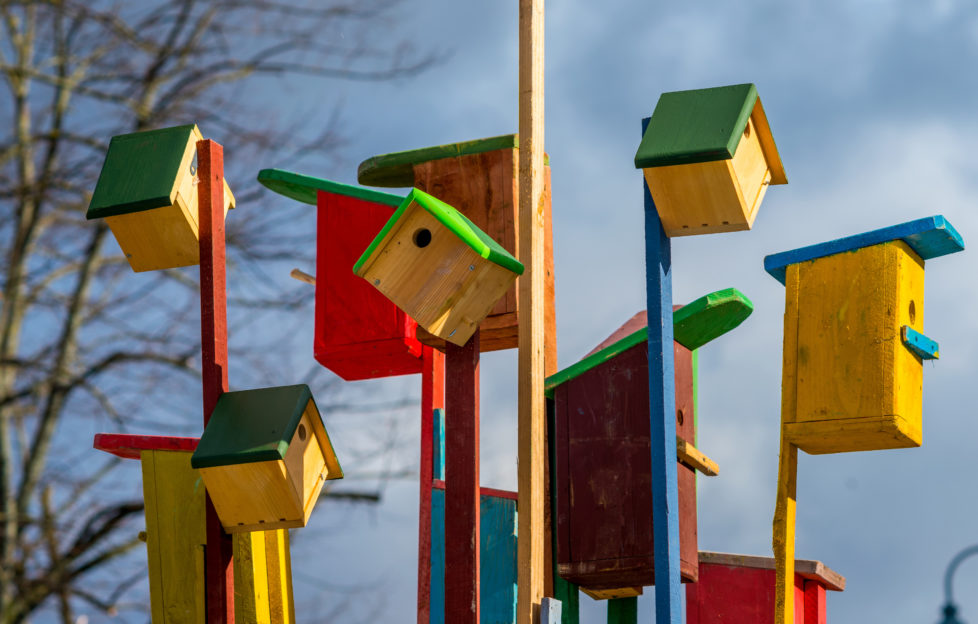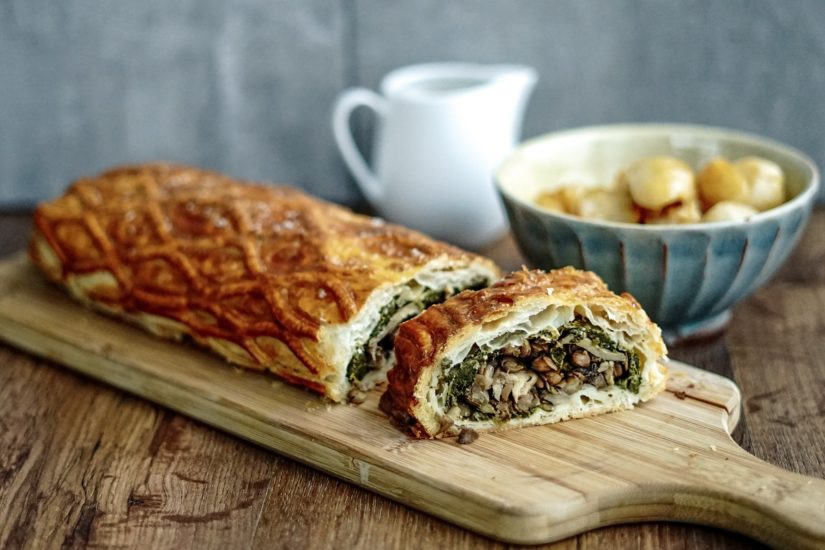
National Nestbox Week runs from February 14-21.
The event puts the spotlight on Britain’s breeding birds, and asks everyone to put up more nestboxes in their local area to help boost bird populations.
To mark the occasion, we’re reprinting the below article from renowned nature writer Polly Pullar, first published in our Special 144.
It was a night of heavy, thundery summer rain.
I had been out and the hill road home was covered with frogs and toads. I refer to this as the frog slalom, and often stop to scoop up dozens of these wonderful little amphibians to transport them to safety. It’s not surprising that it was once believed that they literally rained down from the heavens.
As I turned the car into our driveway my headlights caught a blurry shape on the gatepost. It was a tawny owlet.
I stopped and opened the car window and heard its loud squeaking calls begging more food from its overstretched parents.
Then I saw another perched on the fence. My excitement mounted. I knew our resident tawny owls were nesting in the vicinity of our garden but was not entirely sure where.
When it comes to wildlife I don’t have favourites; not for me the lists of Scotland’s Top Ten. But I admit that the tawny owl, our most common British owl, holds a very special place in my heart.
When I was aged five, one morning prior to leaving for school, I was investigating a dead jackdaw in the nettles close to the old stable block next to our house.
It intrigued me. I liked to have a closer look to examine its long black claws, still with earth beneath witch-like nails.

Photograph by Polly Pullar.
The loveliest bird I had ever seen
I heard a soft churring sound and looked up. There above was the loveliest bird I had ever seen.
It was my first sighting of a tawny owl, and every day thereafter I returned from school eager to see if it was still roosting in the old stable loft.
Usually it was, and if not I quickly learned that the resident blackbirds gave the game away, scolding from the depths of the wood. If I followed the sound I was often rewarded with wonderful owl sightings.
This began a lifelong passion. When I moved to our Perthshire farm 17 years ago, I brought a pair of owls with me.
I have been taking in injured or orphaned owls now since I was a teenager. Indeed, I have probably received more tawny owls than any other species. My goal is always to release them back to the wild.
An excellent place to nest
Once they’re free, I continue to leave out food for them so they have enough to keep them going till they are able to hunt for themselves.
The second year after I moved here, a pair of owls set up their maternity suite in the old bothy chimney right next to the house.
One warm June afternoon, the swallows began emitting frantic alarm calls. I looked up to see two pineapple shapes atop the chimney. This was the inauguration of on-going summer sagas with owls.
The chimney is an excellent place to nest. However, getting the vulnerable young from the chimney to the safety of the surrounding woodland is awkward. There are no trees immediately adjacent and the owlets have first to cross the grass or the gravel.
Though all was well that first year, in subsequent years owlets got into mischief. They nearly came to grief with the neighbour’s cats, and once a speeding van driver did not see what looked like a semi-comatose feather duster at the top of the drive and almost ran it over.

Photograph by Polly Pullar.
Hooting, shrieking and squeaking
So we blocked the chimney and put up an owl box instead.
Two years running they used this, but then a gale took the block off the chimney. We didn’t notice, and back they went to their favourite nursery.
They are very secretive, so often we don’t know they are in there until owlets appear on the top of the chimney.
This summer I was drinking tea in the garden when I looked up and saw an owlet on the chimney.
By early evening another had emerged, and then just before we went to bed, against a glorious backdrop of the setting sun, there were three rounded shapes silhouetted against the darkening sky, and though we wanted to bring them down to safety we decided to leave well alone.
The night was filled with hooting, shrieking and squeaking. And then there was the sound of crashing on the roof.
There, in amongst a tangled rose on the top, was number three
It is amazing how loud this can be even with a young owl merely using the roof as a slide. The mice in the attic above our bedroom sound as if they are wearing hob-nailed boots.
I was up at five a.m. The dogs, eager to see why I was abroad so early, bounced about enthusiastically but were sent back to bed.
I did not need their help this time.
There was one owlet on the chimney, and one on the grass looking rather bewildered. I grabbed it and put it in the safety of the aviary. I then went searching for the third but couldn’t find it anywhere.
Iomhair fetched the big ladder and brought the one on the chimney down whilst wearing a chainsaw helmet in case a watching adult owl was unappreciative of our help.
I was just putting it in the aviary when something on the roof caught my eye and there, in amongst a tangled rose on the top, was number three. Come early evening when all was quiet we would put them safely in a tree in the wood together.
Feeling relieved, I sat in the garden and watched a pair of grey wagtails prospecting nest sites inside the old bothy.

Photograph by Polly Pullar.
The tawny owl is a survivor
The blackbirds began scolding again. I thought it was due to the adult owls hidden in the leafy canopy and went to investigate, and there, up against a lichen-encrusted tree on the edge of the garden, was a fourth owlet. This one must have been more precocious, and had emerged first from the chimney and made it out without help.
Last year, three owlets came every night with their parents to “the café” on top of the aviary. It was a fabulous sight.
They often roosted in the tall birch trees close to the bedroom; our evenings were spent hanging out of the window watching as they flew in and out.
Sometimes a couple of them even perched on the bedroom window-sill and emitted their frantic nagging food calls. It seemed the ultimate reward, a wholly satisfactory end result that made us joyous.
Over the years, I have rescued owls from wood-burning stoves, a pea-canning factory, golf netting, tennis court nets, a road drain, a supermarket shopping trolley and the front grill of a juggernaut. But the tawny owl is a survivor.
A real owl summer
At the time of writing the chimney owlets are deep in the food, but their parents wing in nightly for a little extra snack from the café.
Soon the young owls will find this themselves and our evenings will be filled with their priceless antics, flypasts and balancing acts as they learn to hunt and adapt to their new sylvan world and eventually move further afield.
Meanwhile, residing in the aviary are five orphan owlets brought to us from various places, perhaps picked up by well-wishers when they should have been left well alone.
So now, with 10 owls in the vicinity, it looks as though this is going to be a real owl summer — and though I know not all of them will make it, we will keep the Hoolet Café well-stocked to help them all we can.
For more information on National Nestbox Week, click here.
For more from Polly, read her features on The Wee Trees and rewilding.




